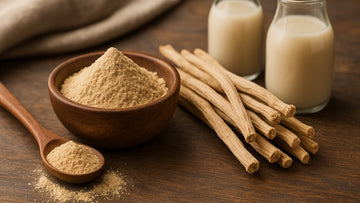How many of you have grown up with mothers and grandmothers telling you to make sure you eat your daily handful of almonds for breakfast? Or can’t imagine a kheer or a halwa without slivers of almond toasted in ghee? For time immemorial, almonds have been used in traditional Indian dishes. But did you know there is an entire world beyond the California Almonds (most common variety) used commercially due to their soft texture and easy availability?
List of Best Almond (Badam)
1. California Almonds

California is the only location in The United States where almonds are cultivated commercially. There are 49 varieties of almonds expanded in the United States. California Almonds are pasteurized with Toxic chemicals, as per “Codex Alimentarius”. It is NOT recommended to ingest the skin of these almonds, because they may contain some residual toxicity.
Four varieties compose 85% of all almonds grown in the state. The four primary grades are –
- Nonpareil
- Carmel
- Independence, and
- Sanora
2. Gurbandi Almonds

The Gurbandi Almonds, also known as ‘Small Giri’, originates from Afghanistan. A small portion of the overall yield is bitter owing to its high oil content. Their small size makes it perfectly packed with nutrition when compared with California Almonds. They are mainly used for snacking and can be consumed directly without having to soak overnight.
Benefits of Gurbandi
- Gurbandi Almonds have more oil content than California Almonds. This is the reason that Gurbandi Almonds have anti-oxidant properties and are rich in essential nutrients such as omega 3, vitamin E, and phytochemicals.
- As in the case of California Almonds, it is recommended to consume them after soaking overnight and after peeling off the skin as they are pasteurized with toxic chemicals. Gurbandi Almonds, on the other hand, can be consumed directly.
- After Mamra Almonds, Gurbandi Almonds are the second top variant in the family of Almonds. The price of Gurbandi Almonds is also high when compared to California ones due to limited supply and the cost of procurement is also high.
3. Mamra Almonds

Mamra Almonds are known to be some of the most delectable almonds that exist on the market today. These tasty nuts are well-known for treating many types of special conditions like showing promise as an effective treatment against strokes and also coronary artery conditions. Furthermore, they’re loaded with vitamins and minerals, consistent with high levels of protein content and healthy oils that help to keep blood pressure levels lower than average while also promoting healthier levels of blood cholesterol.
Types/ Varieties of Mamra Badam
Based on the geographical origin of procurement, Mamra Badam can be categorized into three categories:
Afghani Mamra Badam (From Afghanistan Origin)
They are medium-sized when compared to Mamra from other origins. The oil content could be a little less when compared to other origins but the taste of these almonds is good. Mamra Badam from Afghanistan is known for its crunchiness.
Irani Mamra Badam (From Iran Origin)
Talking about Irani Mamra Badam, they are bigger. They are rich in oil content and have great taste too.
Kashmiri Mamra Badam (From Kashmir Origin)
They are compact or small-sized, which makes them a premium source of oil content. The taste is great too. Due to less availability of modern machinery to this origin, most of the procurement is organic. This also affects the supply size (limited supply) but the nutritional profile is greatly enhanced.
Differences
|
Aspect |
Afghani Mamra Badam (From Afghanistan Origin) |
Irani Mamra Badam (From Iran Origin) |
Kashmiri Mamra Badam (From Kashmir Origin) |
|
Size |
Medium-sized |
Bigger |
Compact or small-sized |
|
Oil Content |
Moderate, slightly less than other origins |
Rich in oil content |
Premium oil content due to organic methods |
|
Taste |
Good, crunchy |
Great taste, rich flavor |
Great taste, organic and rich |
|
Texture |
Crunchy |
Crunchy |
Compact and crunchy |
|
Origin |
Afghanistan |
Iran |
Kashmir |
|
Nutritional Profile |
Good, with moderate oil content |
High in healthy fats, boosts energy |
Enhanced due to organic methods |
|
Supply |
Limited supply |
Moderate availability |
Limited supply, often organic |
|
Production |
Traditional methods, lesser machinery |
Modern methods, larger production |
Organic production, limited machinery |
What is the difference between California Almonds and Mamra Almonds?
According to CFTRI [Central Food Technological Research Institute] –
- California almonds have higher Protein and Vitamin A, B, E, as compared to Mamra almonds.
- Kashmiri Mamra almonds have higher Fat content as compared to California almonds.
- Kashmiri Mamra almonds have more Carbohydrates than California almonds.
- Kashmiri Mamra almonds have higher Calories than California almonds.
- Kashmiri Mamra almonds are mostly of organic origin as compared to the California almonds that are usually pasteurized with chemicals.
| Aspect | California Almonds | Mamra Badam |
| Origin | United States (California) | India (Primarily Gujarat and Rajasthan) |
| Texture | Soft and crunchy | Crunchy, with a distinct texture |
| Taste | Mild, slightly sweet | Rich, earthy flavor |
| Shape | Larger, uniform oval shape | Smaller, irregular shape |
| Price | Moderate to expensive | Expensive |
| Nutritional Benefits | High in healthy fats, Vitamin E, supports skin | High in protein, fiber, boosts immunity |
| Uses | Used in snacking, baking, and cooking | Used in traditional sweets, snacks, and as a topping |
Why Kashmiri Mamra Almonds are more expensive than California almonds?
85% of the almonds available in the market today are California almonds. Mamra Almonds, which originate in Kashmir, Iran, and Afghanistan are just around 3-4% of the world stockpile.
However, talking specifically about Kashmiri Mamra Almonds, they are developed naturally without utilizing synthetics. You normally purchase these almonds in their practically characteristic state. California almonds go through compound handling and are sanitized (treated with high warmth). The extreme warmth handling decreases the solid oil content from the almonds. However, these almonds are purified with Toxic synthetic compounds, according to “Codex Alimentarius”. It isn’t prescribed to ingest the skin of these almonds, since they may contain some lingering harmfulness.
In contrast, Mamra and Gurbandi almonds are appropriate for direct utilization. Mamra is better as it is not chemically treated and is 100% natural. It preserves all the oil and nutrients while California almond is chemically treated which degrades its oil and nutrients by 20–30 per cent and that’s why California almonds are cheaper.
Suggested read - Types of Dry Fruits and Their Uses
What are the benefits of Kashmiri Mamra Almonds/Kashmiri Mamra Badam?
The medical advantages of Kashmiri Mamra almonds are broad, and they are regularly utilized as a sound answer for help from obstruction, respiratory problems, hacks, heart issues, iron deficiency, impotency, and diabetes.

Following mentioned are some of the major benefits:-
- Excellent source of vitamin E
- Rich in protein, fiber & minerals
- Superfood
- Heart friendly
- Reduces bad cholesterol
- Improves metabolic rate
- Good for bones and teeth
- Good for diabetes
- Weight loss and weight gain
- Best brain food
- Memory boosting
Suggested read: Badam Benefits for Hair
How are the Kashmiri almonds harvested?
Kashmiri almonds are harvested manually and each almond is handpicked ans assured for its quality. Watch this video to watch the process -
Source – Farms of Kashmir, The Gulmarg










